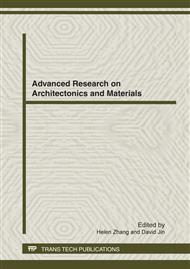p.28
p.32
p.36
p.40
p.46
p.51
p.55
p.60
p.64
Research on Influencing Factors of Wood Residual Fiber Foaming Cushion Material
Abstract:
A wood residual fiber foaming cushion material was prepared by using gathered wood fiber as main raw material, starch/PVA adhesive as matrix, adding a certain amount of foaming agent and related additives, hot compression molding to shape up. This paper makes an investigation of single factor on the product’s surface quality and related mechanical property. Results show that with the amount of wood residual fiber increases, the rebound resilience of the product first increases then decreases. The density decreases along with the amount of foaming agent increases. The compression strength and compression modulus of the product increases along with the amount of wood residual fiber increases, it decreases along with the amount of foaming agent increases.
Info:
Periodical:
Pages:
46-50
Citation:
Online since:
April 2012
Authors:
Keywords:
Price:
Сopyright:
© 2012 Trans Tech Publications Ltd. All Rights Reserved
Share:
Citation:


